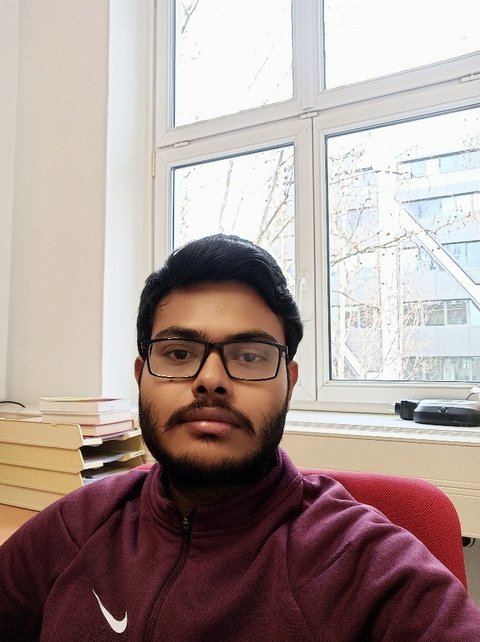
Subham Dutta
Friedrich-Schiller-Universität
Löbdergraben 32
07743 Jena
Curriculum Vitae
Education
- 2018-2021
Bachelor of Science, B.Sc. in Physics, Sidho-Kanho-Birsha University, India | CGPA: 8.45, First Division - 2022-2024
Master of Science, M.Sc. in Physics, Sidho-Kanho-Birsha University, India | CGPA: 7.25, First Division - 2023-2024
Post Graduate Diploma in Nanoscience, Sidho-Kanho-Birsha University, India | CGPA: 8.10
Transferrable Skills
- English
- Bengali
- Hindi
Computational Knowledge
- Languages: C, Python
- Operating system: Linux, Windows
- Simulation Package: Gaussian, GaussView, TURBOMOLE, Material Studio
Software: Origin
Research Interest
- Condensed Matter Theory
- Computational Material Science
- Laser science
- Linear and non-linear spectroscopy
PhD Project
Understanding light-matter interaction to describe light-controlled structure
(Supervisor: Eva von Domaros, Co-Supervisor: Eggeling; contributing to RT1,3)
RP 11 focuses on advancing the theoretical description of light-matter interactions in materials with a specific emphasis on light-controlled structures. As two-dimensional (2D) layered systems offer unique opportunities to manipulate and control optical and electronic properties at the molecular level, currently we are focusing on:
1. Establishing a Computational Protocol for 2D Systems
- To model 2D-layered materials with high accuracy, we are working on refining a computational framework that captures both molecular and electronic structure.
- Systems under investigation include RP 3 materials such as Thiazole, BOPHY and 4''-(Pentyloxy)-[p-terphenyl]-4-carboxylic acid (TPCA-PO).
- A key objective is to determine the most suitable density functional (DFT) approaches for accurately describing electronic states and optical spectra.
2. Calculating Optical Spectra and Molecular Response to Light Excitation
- Using time-dependent DFT (TD-DFT) to predict optical absorption properties.
- Evaluating the structural response of molecules upon photoexcitation, considering geometric relaxation and electronic state transitions.
- Applying DFT-in-DFT embedding methods to calculate spectra in 2-D periodic system.
Alongside we plan to finish the implementation of Nuclear Electronic Orbital (NEO)-DFT in the periodic system to account for the coupling between electronic excitations and nuclear structure depending on the pH as an external stimulus. In systems where light excitation couples electronic states with nuclear motion, the traditional separation of both the degrees of freedom becomes inadequate. To address this, the NEO approach can be employed, which treats selected nuclei quantum mechanically alongside electrons.
RP 11 is strongly linked with experimental research within PHINT, as theoretical predictions will be validated through advanced spectroscopy methods. Through these interdisciplinary efforts, RP 11 will bridge gaps between theory and experiment, offering new insights into how light controls material properties at the molecular level. Ultimately, this research will contribute to the development of novel optoelectronic materials, energy-efficient membranes, and light-responsive functional surfaces.